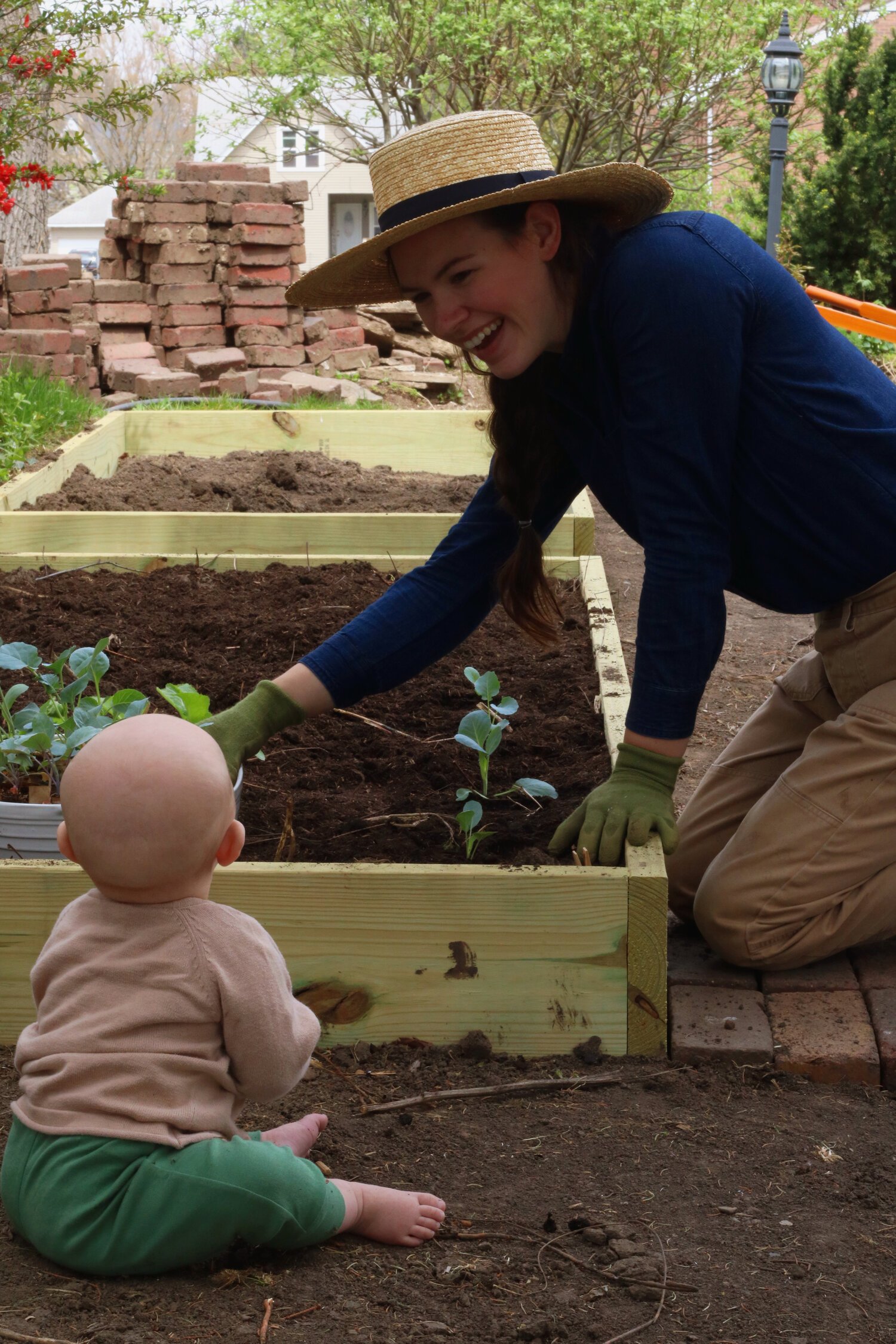Video: How to Fill Raised Beds Simply & Organically
We are making some way in our garden! It’s taking a bit longer than usual, as we have been busy this season with a new baby, soccer and baseball games, church activities, and other fun spring things now that the world around us is opening back up a bit since the pandemic. I am really excited to reveal our garden to you when it is all built. Right now, we only have four of our raised beds built. and we have four more to add! There will be beautiful brick paved walking paths between beds, annual flower borders, a cedar picket fence, arbor with climbing roses, and cold frames. I can see it all in my mind! But right now it’s just some cut sod and frames.
We decided to use raised beds this year to make our lives a little easier. I’ve worked with raised beds in the past and enjoyed them, though I think my heart will always be fond of in-ground growing. The work is more laborious, for sure! We wanted to try raised beds as we now live in town again, and our yard is sloped in many places. With the addition of an infant, I thought it might be nice to finally have a space where I don’t have loads of weeds to deal with and it would be easier on my lower back!
Our raised beds were originally going to be made from cedar, but with the wood shortage near us and the high prices, we decided to compromise and work with treated pine. I know - many of you will scold me for using treated wood. While we do prefer organic growing methods and try our hardest to stay as natural as we can, we are not purists and work with what we have available to us. This is what was available, which is a practice of permaculture gardening (something I am starting to prefer over organic!). We are using the gorgeous topsoil from our yard, where we are digging down to make level brick walking paths. The bulk of our beds is also made up of the yard clippings and waste we’ve been picking up for the past month around the property. It’s all a regenerative cycle here!
how to fill a raised garden bed:
Calculate the cubic feet of your beds. To do this, simply multiply the length x width x height of the beds in feet. My beds in this video are 8 ft x 4 ft x 0.5 ft. That gives me 16 cubic feet of space to fill.
Figure out your soil percentages. These are all across the board for most gardeners, as everyone has different preferences to how much of what type of medium is in the bed and everyone thinks they know what is best! For me, I like to do a mix of 60% topsoil, 30% compost, and 10% potting mix or container mix. It really depends upon the type of container mix you are using - some recommend 50% container mix and 50% topsoil, as they already have compost worked into their mix. I am using what is locally available to me. If I am going to purchase a soil medium, I want it to be organic. If it is something that I have on hand from my yard, then I try to be open minded.
Fill the bottom with a carbon filler. We had a lot of yard waste clippings and such leftover from the fall. Because our beds are on a slope, some of them are raised even higher to be level. We are making up space in those taller beds with the yard waste, like twigs and sticks and fallen leaves. You can also put down cardboard or straw as a weed block, if your beds are connected to the in-ground soil. We filled ours about 1/3rd of the way up.
To mix or not to mix. We chose not to fully mix our soil mediums. I layered them, like a lasagna. I love the lasagna gardening method, and it works just as well for the plants, plus there’s hardly any back-breaking work. We have done this for raised beds in the past, and they do just fine.
Fertilize, if necessary. For a brand new raised bed, most container mixes have enough fertilizer built in to last for at least the first half of the season. It’s a good idea to add any amendments or fertilizers before autumn planting or the following spring. Good fertilizers for raised beds are those that are lighter on the NPK scale, like worm castings, compost, compost tea, etc.
The video above is a more detailed how-to of me filling our first bed. I decided to set out a bit of our broccoli and cauliflower starts. Wish me luck in keeping them alive since we do not have our garden fence up yet, and our yard is full of rabbits! So far, they are hanging in there, but I know that will probably not last forever. Either way, I feel one step closer to being ready to plant in the next few weeks. Our last spring frost date is fast approaching, around May 15th!
Do you have raised garden beds or are thinking about putting some in? I am loving the ease of them for filling with fluffy, soft soil and being able to control what exactly is going into it. So much less guess work!
xoxo Kayla





